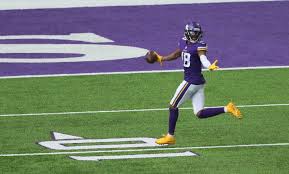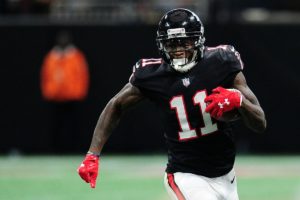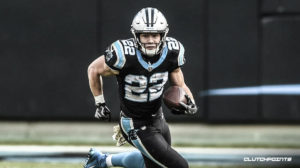
Yards Per Fantasy University: Dynasty Fantasy Football 101
Welcome back class and welcome to Dynasty Fantasy Football 101. I’ll be your professor for our introductory level dynasty fantasy football course. In this course we will examine the differences between your common redraft league and some basic strategies that happen in every league. Get your notebooks out, because here we go!
SEE ALL COURSES
DRAFT

Let’s start with the beginning of the league. Most fantasy football players are familiar with drafting and the different styles of drafting. The biggest difference with dynasty compared to redraft is the different ideas of building through the draft. In redraft, you’re only looking at winning for that season. This means players like Julio Jones and Tom Brady carry substantial value, despite their age. In dynasty, you are drafting a team for the long run, and this draft is typically called a “startup draft.” Sure, you could treat the dynasty draft like a redraft league and chase a championship in the first year, but be cautious… the goal is in the name: to create a dynasty. Typically young up and coming players find more value in dynasty drafts. Players like Tua Tagovailoa and Jamarr Chase go much higher than Brady and Julio due to their perceived longevity of production. The choice is yours really. You could fill out a roster of all sub-24 year old players and hope they grow into studs, draft a win now team and hope to win a couple years of league dues in the first year, or a combination of the two approaches knowing you can replace older players in the rookie draft.
ROOKIE DRAFT

Unlike redraft, each team keeps their entire roster year after year, only adding talent through the waiver wire and the rookie draft. Typically, dynasty rosters are much deeper than redraft rosters, so your best bet to add contributing talent to your roster is through the rookie draft. Depending on your league finish, you’ll be assigned a draft slot, and these rookie drafts are typically linear, unlike the snake draft you may be familiar with. Each year there are talented rookies enter the NFL that make a big impact (hello Justin Jefferson and Jonathan Taylor). The value of these picks may rival a high end startup pick (again, check out Jefferson’s and Taylor’s ADP for the 2021 season). Obviously a higher pick gives you the ability to add high-end talent to your roster but Jefferson wasn’t a top pick in the 2020 rookie dynasty draft class so you can find talent through these drafts. James Robinson, Tyreek Hill and Travis Kelce come to mind as recent later round rookie steals.
To get a high draft pick, your team needs to finish near the bottom of the league. One of the best part of dynasty leagues is the trading differences from redraft.
TRADING

In redraft, everyone’s goal is to win a championship that season. Up until your leagues trade deadline, teams will have a pretty good idea of where they will finish in the league. A bad team in redraft has no incentive to keep competing. A bad team in dynasty can take the approach that we see in the NFL or MLB, where assets are sold off to contenders so draft picks or prospects can be acquired. If you have Julio Jones on your 2-7 dynasty team, the 10-1 contender will value that player more than you will. Julio won’t help you win for the next three seasons (more on that in a bit), but he will help the contender win a title. You will get a younger player or draft compensation back to help your team build toward the future. There are numerous dynasty trade calculators out there to help you gauge the value of a player, so lean on those while you’re still learning the ropes of dynasty.
STRATEGY

I’ll hit on a couple of basic strategies here, but feel free to contact me or the YPF team for higher level strategies. In dynasty, you are looking to build a team and acquire assets that can help you win in a three-ish year window. Back to the Julio Jones value. He has been a stud for fantasy managers, but how long will that level of production remain? How about a guy like Todd Gurley? Just three seasons ago, Gurley was THE RB to own in fantasy football. As of this post, Gurley remains unsigned. Had you flipped Gurley at his peak value, you could have gotten multiple early rookie draft picks and loaded your team up with younger studs who can contribute for longer.
You need to constantly re-evaluate your team. The team you thought was ready to compete may not be that good anymore. Players age, and maybe the age cliff came earlier than you thought. You need to always be open to tearing down your team and rebuilding or rebooting your roster.
Tanking may be a viable strategy in your league and if the rules don’t forbid it, this may be a way to go. Lose a bunch of games with an understanding that you will have high draft picks for the following year. Some leagues don’t allow tanking (read your bylaws) so you can take the productive struggle route. The productive struggle, which I believe was first coined by Ryan McDowell over at Dynasty League Football, loosely translated, is the approach of taking players that aren’t considered year one contributors or players that have more value to a contender. In your startup draft, maybe you value a guy like Javonte Williams over Ezekiel Elliot. Williams may share a backfield with Melvin Gordon this year, eating into his top end results. Elliott likely owns the Dallas backfield this year and should be a great option for managers. Fast forward to next season… Gordon is likely gone, Williams owns that backfield, and Zeke is a year older with another years worth of carries under his belt. Your team would score more points this year with Zeke, but both could score a similar amount in 2022, and I project Williams to outscore Zeke in 2023. By scoring less this year and having Williams, you’ll end up with a higher draft pick. Meaning you could add another rookie RB to your stable and work towards becoming a dynasty.
Another option is drafting a guy like Mike Davis in your startup with the intent to trade him later. Davis likely won’t be a top 12 option for this season, but could be a top 24 option. Davis won’t put your productive struggle roster into a title game, but he will be valuable as a contenders RB3 or RB4. A contender may be tempted to overpay for Davis, an asset that won’t help you across the next three seasons, and you could acquire a draft pick or a younger higher upside player.
SUMMARY

In the simplest form, redraft is a year long focus whereas dynasty is the long game. Dynasty managers can get bogged down with having the best prospects and never win a title. A redraft manager can be focused on the present and lose out on the future. By focusing on a three-ish year approach you can take aspects from redraft and apply it to your dynasty roster to truly become a dynasty. Your startup draft sets the table for your strategy, your rookie drafts replenish talent to your roster and trades can play a big role in your teams direction.
Bottom line: dynasty is a fun way to pretend to be an NFL team. I liken dynasty to playing franchise mode on Madden. You’re the general manager. Keep the roster year over year, add draft picks and rookies to keep building your team and create a dynasty!
And of course, you can always ask the Yards Per Fantasy team for help and advice any time with our Ask The Expert feature.
Professor: Follow Nate Dreslinksi (@ffbigcat)

